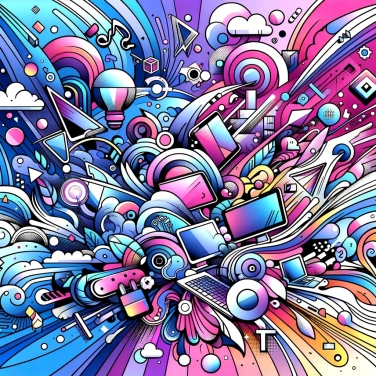Augmented reality has the potential to revolutionize education by providing immersive and interactive experiences, helping students better understand abstract concepts, visualize complex subjects, and make learning more engaging and memorable.

With augmented reality (AR), students can directly interact with the subjects being studied. Observing a volcano erupting in the middle of the classroom or exploring a life-sized human body becomes possible, making learning more concrete and fun. Students' attention is stimulated, which enhances their engagement. The result: less boredom, more curiosity, and a boosted motivation. When fully immersed in an experience, one understands better and retains information longer.
Augmented reality allows for a clear visualization of things that are usually abstract or complicated. Imagine learning about molecules in chemistry: instead of struggling with incomprehensible formulas, you can directly manipulate a virtual molecule, rotate it, and observe it from all angles. The same applies in physics for understanding magnetic or electric fields: thanks to 3D visualization, the concepts become intuitive. Specifically, by using augmented reality, you shift from theory, which is often difficult to imagine, to a clear visual understanding, almost as if you were seeing the phenomenon in front of you. The result: it becomes less confusing, you understand faster, and complicated notions suddenly don’t seem so complicated anymore.
Augmented reality allows multiple students to work together by directly interacting with the same virtual models. Even from a distance, they can manipulate virtual objects together in real-time. This makes group work more tangible, dynamic, and truly interactive. Each student can share in real-time what they see, virtually point to the object being discussed, or annotate directly on a shared space. As a result, collaborative learning becomes more active, more motivating, and promotes better communication among students.
Augmented reality allows for easy adaptation of learning to the pace and specific needs of each student. If a student struggles with a particular topic, they can immediately benefit from personalized exercises or different visual explanations to better understand. The technology tracks individual progress in real time, identifies specific difficulties, and then offers tailored content. Instead of having the same method for an entire class, each person can progress according to their own abilities, interests, or learning style. This makes learning much more effective, avoids unnecessary frustrations, and gives everyone the pleasant feeling of progressing at their own speed.
With augmented reality, both students and teachers easily access advanced interactive content that is usually difficult to reach. No longer do we have to limit ourselves to traditional textbooks: thanks to AR, we can explore detailed 3D models, animations, or realistic simulations in just a few seconds. For example, imagine discovering how an electric motor works by visualizing each component virtually, right in front of you, in real time. This quick access to rich and interactive educational material makes studying significantly more engaging and effective, while simplifying the approach to previously intimidating subjects.
According to a recent educational study, students using augmented reality in the classroom show a 35% increase in their engagement and focus compared to traditional methods.
Some augmented reality applications allow students to virtually visit historical monuments or museums on the other side of the world without leaving the classroom.
Thanks to augmented reality, it is possible to simulate complex scientific experiments in the classroom without the use of expensive or dangerous materials, which promotes access to equitable and inclusive teaching approaches.
Using augmented reality, teachers can bring more personalization to their lessons. For example, they can track students' progress in real time and instantly adjust educational content according to each individual's needs.
Most educational AR applications only require compatible tablets or smartphones. However, some advanced solutions may require specialized AR glasses or dedicated headsets for a more immersive experience.
Yes, augmented reality solutions can be adapted to different educational levels, ranging from preschool to higher education, with complexity and content tailored to the age and specific needs of the students.
Subjects such as natural sciences, anatomy, astronomy, history, geography, and foreign languages particularly benefit from the interactive and immersive visualization made possible by augmented reality.
Sure! Here’s the translation: "Yes, certain challenges exist, such as the economic accessibility of certain equipment, the necessary training of teachers in new technologies, as well as the need for a reliable technical infrastructure (Internet connection, compatible devices)."
By integrating interactive and visually rich content, augmented reality stimulates students' interest and active engagement, thereby reducing distractions and improving their attention during educational activities.

0% of respondents passed this quiz completely!
Question 1/6